South Korean director Jin Sung Choi (Tom N Jerry, Entering the Mind Through the Mouth
) is well into production of his first feature film,
The Customized Play, which has a quirky storyline:
Chun Jaeyoung and Chun Yusun visit the unusual drama company, which produces the customized play for each client. They ask the boss of the troupe to make the play for their father, Chun Jongsik, who is having his 70th birthday. The boss creates the customized play through interviews with their father and his acquaintances. In the play, Chun Jongsik, experiences fiction and truth from the past, and realizes what he has done and what he has been feeling sincerely,and eventually faces the trauma that has harassed him.
The film is being made with a crew of just a half-dozen artists, but you’d never guess how small the team by looking at the film’s lush, complex visual style:
(via Catsuka)

By Joseph M. Siracusa
Any discussion of North Korea’s nuclear program should begin with an understanding of the limited information available regarding its development. North Korea has been very effective in denying external observers any significant information on its nuclear program. As a result, the outside world has had little direct evidence of the North Korean efforts and has mainly relied on indirect inferences, leaving substantial uncertainties.
Moreover, because its nuclear weapons program wasn’t self-contained, it has been especially difficult to determine how much external assistance arrived and from where, and to assess the program’s overall sophistication.
That said, what is known is that Pyongyang has tested three nuclear devices: in 2006, 2009, and, of course most recently, on 12 February 2013. They have all had varying degrees of success, and North Korea has put considerable effort into developing and testing missiles as possible delivery vehicles.
February’s detonation of a “smaller and light” nuclear device — presumably, part of the plan to build a small atomic weapon to mount on a long-range missile — was the first test carried out by Kim Jong Eun, the young, third-generation leader, following in the footsteps of his father and grandfather. And while it always intriguing to speculate on who is running the show in North Korea, the finger generallyseems to point to the military.
Many foreign observers have come to believe the otherwise desperate, hungry population (and failing regime?) that make up North Korea’s secretive police state is best symbolized by its nuclear and missile programs. Which gives rise to the basic question: what, then, is Pyongyang’s motivation for its nuclear and missile programs? Is it, as Victor Cha once asked, for swords, shields, or badges?
In other words, are the programs intended to provide offensive weapons, defensive weapons, or symbols of status? In spite of prolonged diplomatic negotiations with Pyongyang officials over the past two decades, the question of motivation remains elusive.
Pyongyang’s interest in obtaining nuclear weaponry, beginning around the mid-1950s, has apparently stemmed in part from what it perceived as the US’s nuclear threats and concerns about the nuclear umbrella that protects South Korea. These threats, in turn, have pervaded North Korean strategic thought and action since the Korean War.
These actions may be gauged as offensive or defensive, but Pyongyang officials were at one point fearful of South Korea’s nuclear ambitions and later uncertain about the US emphasis on tactical nuclear weapons and its nuclear “first use” policy in defense of the South. These nuclear-armed additions included 280mm artillery shells, rockets, cruise missiles, and mines.
 Against this backdrop, all of North Korea’s nuclear activities tend to focus on a single goal: preservation of the regime. Possessing nuclear weapons would diminish the US’s threat to the nation’s independence, but it could also reduce Pyongyang’s dependence upon China for its security.
Against this backdrop, all of North Korea’s nuclear activities tend to focus on a single goal: preservation of the regime. Possessing nuclear weapons would diminish the US’s threat to the nation’s independence, but it could also reduce Pyongyang’s dependence upon China for its security.
North Korean officials, too, may feel that a small nuclear force offers some insurance against South Korea’s dynamic economic growth and its eventual conventional military superiority.
Pyongyang undoubtedly views its burgeoning nuclear arsenal as a symbol of the regime’s legitimacy and status, which would assist in keeping the Stalinist dynasty in power. Additionally enhanced status would, of course, assist in gaining diplomatic leverage.
Although the North Koreans have boasted about their nuclear deterrent’s ability to hold the US and it allies at bay, it is fairly clear that North Korea has vastly overstated its ability to strike, in part because of the limited amount of fissile material available to Pyongyang and also because of its inability to field a credible delivery option for its nuclear weapons.
The North Koreans have launched long-range ballistic missiles in 1998, 2006, 2009, and 2012, with limited success. By comparison, the US test fires its new missiles scores of times to ensure that they are operationally effective. North Korea would need many more tests of all the systems, independently and together, at a much higher rate than one every few years, to have confidence the missile would even leave the launch pad, let alone approach a target with sufficient accuracy to destroy it.
This was dramatically demonstrated on 13 April 2012, by the failure of the much-hyped effort to employ a three-stage missile, which would send a satellite into space. If the missile was, as Washington and Tokyo believed, a disguised test of an ICBM, the fact that it crashed into the sea shortly after launch illustrated that North Korea’s development and testing of missiles as possible delivery vehicles had miles to go.
Joseph M. Siracusa is Professor in Human Security and International Diplomacy and Associate Dean of International Studies, at the Royal Melbourne Institute of Technology, Melbourne, Australia. Among his numerous books are included: Nuclear Weapons: A Very Short Introduction (2008) and A Global History of the Nuclear Arms Race: Weapons, Strategy, and Politics, 2 vols., with Richard Dean Burns (2013).
The Very Short Introductions (VSI) series combines a small format with authoritative analysis and big ideas for hundreds of topic areas. Written by our expert authors, these books can change the way you think about the things that interest you and are the perfect introduction to subjects you previously knew nothing about. Grow your knowledge with OUPblog and the VSI series every Friday!
Subscribe to the OUPblog via email or RSS.
Subscribe to only VSI articles on the OUPblog via email or RSS
Image credit: North Korea Theater Missile Threats, By Institute for National Strategic Studies (INSS.) Public domain via Wikimedia Commons.
The post North Korea and the bomb appeared first on OUPblog.

There is a mind-boggling breadth of expression and experimentation across the contemporary global animation scene. The short animation clips and exercises that I offer in Animated Fragments represent just a glimpse of the fresh ideas being explored by today’s animators:
“QQQ” Trailer by YungSung Song (South Korea/Japan)
“Feuerwerk” by Joshua Catalano (France)
“More Than A Feeling” by Matt Reynolds (US)
“CVTV” by Saigo No Shudan (Japan)
“Feminine Flow” by Rickard Bengtsson (Sweden): “This animation, except the subtle background texture, is created 100% in After Effects. All of the animation is created and keyframed by hand using lots of masks and layers.”
The 2012 Bologna Ragazzi Awards for the best children's books in terms of graphic and editorial design have been announced. Champagne, cake, confetti, coffee, and CONGRATULATIONS go to:
New Horizons - Mentions

Misunderstanding, written by Farideh Khalatbaree and illustrated by Ali Boozari (Shabaviz Publishing Company, Tehran – Iran)

Waterlife, written and illustrated by Rambharos Jha (Tara Books, Chennai – India)
Opera Prima - Winner

Tabati, written by Nadine R. L. Touma and illustrated by Lara Assouad Khoury (Dar Onboz, Beirut - Lebanon)
Opera Prima - Mention

Grimmie's White Canvas, written and illustrated by Hyunjoo Lee (Sang Publishing, Seoul – Republic of Korea)
Thanks to my friend Jules, one of the Ragazzi jurors, for this information!
South Korea, the world’s most wired nation, has announced it expects to replace all paper text books with electronic tablets at its state run schools by 2015.
read more
I’ve written fairly often about the contemporary evolution of animation beyond the flat, rectangular, non-interactive screen. Animation will increasingly be integrated into the built environment over the coming years, and new applications of the art form will evolve. One exciting area I hadn’t considered, however, is how animation could be integrated with a natural backdrop. These possibilities are explored in the impressive projection mapping experiment “Lit Trees” by Seoul/London-based Kimchi and Chips which encourages audiences to interact with trees through an animated interface:
Through the use of video projection, a tree is augmented in a non-invasive way, enabling the presentation of volumetric light patterns using itʼs own leaves as voxels (3D pixels). We have developed our own structured light system (called MapTools-SL) which scans the location of every pixel in 3D, allowing a cloud of scattered projector pixels to be used as 3D Voxels.
The tree invites viewers with a choreographed cloud of light that can respond visitors motion. As visitors approach, they can explore the immediate and cryptic nature of this reaction. The tree can form gestures in this way, and can in turn detect the gestures of its visitors. By applying a superficial layer of immediate interaction to the tree, can people better appreciate the long term invisible interaction that they share with it?
The most fascinating by-product of such an idea is that the animation could potentially assist plant growth. It would be cool to get some biologists involved and have them collaborate with animators on developing this further:
Since the colour temperature of light produced by a video projector’s bulb is similar to the surface of the sun (5800K), we suggest that over time, the tree could naturally react to the light that is projected onto it….We listen to the tree’s reaction through the detailed 3D scans of its shape that are produced by the projection system. This type of photosynthesis would also allow for the tree to self-optimise for projection. Leaves which are in shadow from the projection move out to find the projector’s light. Furthermore light wasted inside the tree is absorbed in photosynthesis, which converts local carbon dioxide to oxygen.
More details on the Kimchi and Chips website.
Cartoon Brew: Leading the Animation Conversation |
Permalink |
One comment |
Post tags: Kimchi and Chips, Projection mapping, South Korea, UK
Among the many extraordinary young people in my most recent class at the University of Pennsylvania was a freshman from South Korea with a philosopher's soul. K went at projects in his own fashion and earned our lasting respect for the ways in which he'd quietly, politely defend his literary outposts. He moved fearlessly outside the confines of form and foundation to suggest a new approach, at one point earning J's highest encomium, "That took balls, man." K was unafraid of dreaming out loud, unafraid of hoping, unafraid of expressing his deep, abiding affection for his mother. K wrote not of disdain and fractures, but of love and sacrifice, of the "whistle of the wind through the open window." That open window was in our own classroom. He wrote movingly, too, of its walls, its soul.
What had shaped this young man? I often wondered, and when I read of Kyung-sook Shin's
Please Look After Mom, I knew I had to read it—had to see South Korea through the eyes of one of its most famous working novelists.
Mom is the story of lostness—of a South Korean woman who is somehow not right there, with her husband, when the train they are to ride together pulls out of the Seoul Station. The woman had been beset by blinding headaches and some amnesia. She was getting on in age. She had, to be honest, been largely taken for granted. But now Park So-nyo is gone, and desperation sets in as her husband and adult children set out to find her.
We learn the story through the voices of Park's novelist daughter, her eldest son, her husband, and a younger daughter (before hearing, finally, from Park herself). We understand, throughout all the pained and poignant remembering and reassessing, that it is not just that Park's family doesn't know where she is and cannot find her. It's that they may never really have known her at all.
This simply-told story embodies haunting, complex truths. It yields a devastating but gorgeous portrait of South Korea. It reminds us that mothers were children once, mothers have dreams, mothers are wrecked and salvaged by their secrets. This is a book that I didn't want to part with. It's a book that I will read again.
I quote from this letter tucked inside the book, written by the younger daughter. I choose this passage because it is Mother's Day and, while I am not
this daughter, I was
a daughter. I honor today those things that I will never know fully about my own mom, those things she dreamed and wanted.
I know one thing. I can't do it like she did. Even if I wanted to. When I'm feeding my kids, I often feel annoyed, burdened, as if they're holding on to my ankles. I love my kids, and I am moved—wondering, did I really give birth to them? But I can't give them my entire life like Mom did. Depending on the situation, I act as if I would give them my eyes if they need them, but I'm not Mom.... She didn't have the opportunity to pursue her dreams and, all by herself, faced everything the era dealt her, poverty and sadness, and she couldn't do anything about her life other than suffer through it and get beyond it and live her life to the very best of her ability, giving her body and her heart to it completely. Why did I never give a thought to Mom's dreams?



From October 1 to November 14, the Nami Island Festival welcomes publishers, writers, children, readers, international delegates from all over the world in a celebration of literature, the arts and peace.
 The festival is publishing Peace Story with support from the United Nations.
The festival is publishing Peace Story with support from the United Nations.
Peace Story has come from the spirit of this festival which invited authors and illustrators from 22 countries to write about peace and create a unique picture book for the world.
Much loved authors and illustrators from countries including Austria, Bolivia, Turkey, USA …have participated. I was invited to represent Australia.
The award winning illustrator Frane Lessac has illustrated my story ‘Remember East Timor – with love from Australia.’
It is one of the most beautiful projects.
Frane and I will be in Nami Island from 2 to 8 th November for the Festival. Join us if you are there.
For morel information – www.nambook.org
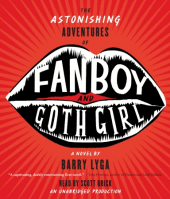
The Astonishing Adventures of Fanboy and Goth Girl by Barry Lyga is a very well-written formula story, the formula being bitterly unhappy genius teen loner meets suicidal girl and no one lives happily ever after. I was kind of anxious while reading it because I pretty much knew what was going to happen, and I kept hoping things were going to be different because I hated to see such good writing doing the same old, same old.
Fanboy isn't a massive book but it seemed to take me a long time to get through it. Some of the scenes seemed to go on and on, particularly when Fanboy and Goth Girl were fighting. For instance, there's one scene in which they're talking about girls' breasts that seemed as if it could have used a little nip/tuck. And yet, the ending seemed rushed. I had trouble seeing how ol' Fanboy got to various points in his thinking. I felt he was making some creative leaps and not taking me with him. I think one could make an argument that the ending was more upbeat than it could have been, but it's hard to see exactly how Fanboy got there.
I kept thinking of Boy Proof while I was reading Fanboy because while Boy Proof covers a lot of the same ground--brilliant, arty teen who doesn't fit in--it doesn't seem as oppressively formulaic.
Check out the Amazon reviews for more positive responses to this book.















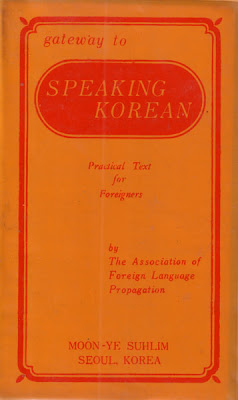

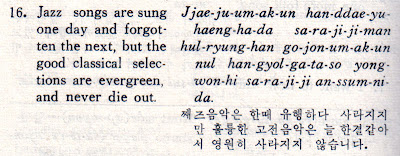












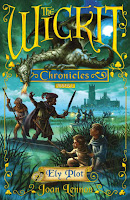
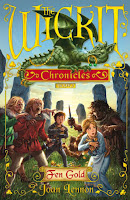


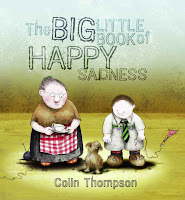
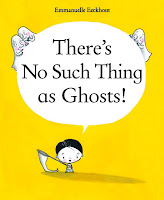
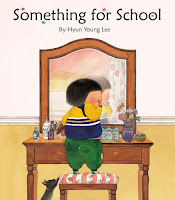






The book sounds fabulous! Happy Mother's Day, Beth!